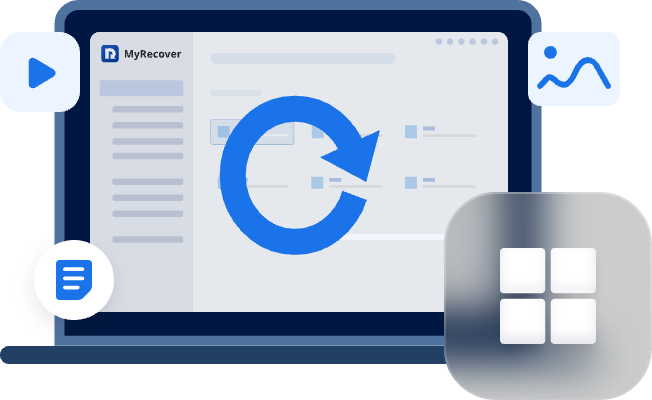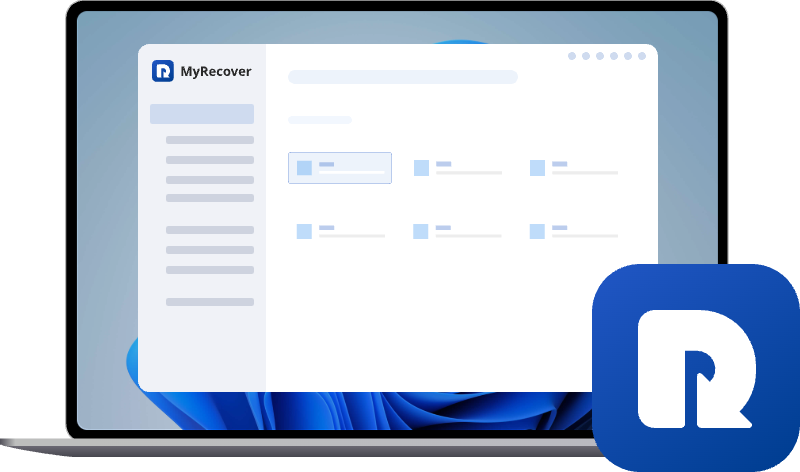How to Recover Files from Old Computer Hard Drive [9 Effective Ways]
Searching for a solution to recover files from an old hard disk? You’re in the right place! On this page, we'll guide you through the entire process with tried-and-true techniques, ensuring you have the best chance of recovering your valuable data. No matter what kind of hard disk trouble you encounter, there’s always a fitting solution waiting for you to choose.
Is it Possible to Recover Files from Old Computer Hard Drive?
As the hard disk is used over an extended period and accumulates a growing volume of stored data, it will inevitably encounter problems like performance degradation, logical errors or physical damage. In such situations, you may often choose to replace the hard drive with a new one that provides superior performance. However, considering that old hard disks usually still contain a large number of important files, the task how to recover files from old computer hard drive has become an urgent and significant concern.
You might have been in doubt, wondering whether it's possible to recover files from an old computer hard disk. The reassuring answer is a definite yes. However, there is an essential prerequisite: you need to select the appropriate approach according to the specific condition of the hard disk so as to retrieve the files efficiently.
How to Recover Files from Old Computer Hard Drive
To determine if files can be recovered from a hard disk, the key factor is the damage condition of the hard disk. Older hard drives typically fall into one of four scenarios: fully operational with intact data, functional but with lost/corrupted data, completely non-functional (unbootable), or physically damaged. Selecting the appropriate recovery method based on the drive's specific condition significantly improves file recovery success rates.
Recover Files from a Functional and Data-Safe Computer Hard Drive
If your hard disk is fully functional and the data stored on it remains uncorrupted, this presents the ideal opportunity for data recovery. To help you make the most of this situation, here is a comprehensive list of five effective methods.
Method 1. Use an IDE/SATA Adapter
A hard drive adapter is a device that connects an external hard drive to the computer. Drive adapters are generally used to easily clone the contents of an existing drive to a new drive. The adapter is inserted into the drive's connector on one end and the USB port of the computer on the other. The computer will then detect the drive and enable you to access the data on the drive.
Step 1. Prepare an adapter (SATA or IDE) which suits for your computer and the hard drive (If you have a 3.5-inch hard drive, you'll may also need a power adapter).
Step 2. Remove the hard drive from the old computer while it is the powered-off state.
Step 3. Connect the adapter to the hard drive and your new computer.
Step 4. When the file explorer detects the drive, you can copy the files you need to anywhere you want.
Method 2. Install in an External Enclosure
An external enclosure is a housing that connects an internal storage device, like HDD or SSD, to a computer as an external device. It essentially transforms an internal drive into a portable storage solution. This allows you to add more storage space to your computer, transfer data between devices, or use the drive as an offsite backup. Thus, you can utilize an external enclosure to transfer data from the old hard drive to the new device.
Step 1. Safely remove the old hard drive from the old device in the shutdown state.
Step 2. Prepare an external enclosure (ensure the connection port is suitable for the old hard drive).
Step 3. Insert the old hard drive into the external enclosure.
Step 4. Connect your new computer with the USB.
While your computer recognizes the drive, you can save all the files on it to your new device.
Method 3. Use a USB Docking Station
A docking station is a device that enhances a laptop's or mobile device's functionality by providing additional ports and connectivity options. It typically provides a variety of connection options for connecting to other devices. USB docking station is an excellent tool for accessing old hard drives (HDD/SSD) because it supports multiple drive types and allows quick plug-and-play functionality.
Step 1. Connect the old hard drive to the docking station’s cradle (check the type of the hard drive port).
Step 2. Connect the docking station to your computer with the provided USB cable.
Step 3. Plug in the docking station’s power adapter.
Once the computer automatically detects the hard drive, you can select the files you want to recover.
Method 4. Direct Connection to a PC Motherboard
If you're seeking a completely cost-free solution and haven't had the chance to prepare an adapter in time, the most straightforward and accessible method is to physically remove the hard drive from your old computer. After that, carefully install the hard drive onto the motherboard of your new computer. Make sure to connect all the necessary cables properly. Once installed, you can then access your new computer and proceed to recover the specific files you need from the old hard drive.
It's important to note that different computer systems may have some compatibility differences, and it's advisable to check the specifications and connections beforehand to ensure a smooth data recovery process. Also, be cautious during the installation process to avoid any potential damage to the hard drive or the new computer's components.
- ★Tips:
- Hard disk removal and installation must be executed only when the computer is switched off.
Overall, when dealing with a fully functional hard drive that has readable data, all you need to do is connect it to the computer using an appropriate connector, and then you can transfer files to the new hard drive. However, it is essential to exercise caution throughout the process to prevent any damage to the old hard disk.
Recover Files from a Functional but Data-Lost Computer Hard Drive
If your hard drive is still working, yet all the data within has seemingly vanished, don't despair. Even without knowing the exact cause behind this data loss, there are two reliable data recovery software options that can potentially help you retrieve your precious data.
Method 1. Run Windows File Recovery
Windows File Recovery, a free command-line utility developed by Microsoft, is compatible with Windows 10 and subsequent versions. Tailored for retrieving deleted or missing files, it supports a wide range of local storage devices, including internal and external hard drives, SD cards, and USB flash drives. Here’s a step-by-step guide on how to use this tool to recover your lost data.
Step 1. Download and install Windows File Recovery on your computer (This tool only works with Windows 10 and 11. If your system is older, please skip to next method.).
Step 2. Type"windows file recovery" in the start menu and right-click "Run as administrator".
Step 3. In the opened command prompt window enter the command winfr G: E: /extensive. Replace the letter "G" and "E" with your actual source drive letter and destination drive letter.
Step 4. Wait several minutes until the process reaches 100%, then you can check the recovered files in the destination folder."
Method 2. Use Third-Party Data Recovery Software: MyRecover
If mastering the Windows File Recovery command line proves too challenging, consider using MyRecover, a user-friendly third-party data recovery software. Its intuitive graphical user interface streamlines the complex data recovery process. Moreover, MyRecover is compatible with Windows 11, 10, 8, 8.1, 7, and Server operating systems.
Step 1. Download and install MyRecover on your computer, don’t install it on the old hard drive.
Step 2. Open the tool and select the old hard drive to search, then click "Scan".
Step 3. Select the files you want to recover from the recoverable list and click "Recover".
Step 4. Choose a secure drive to save files.
If your old computer won't boot, you can also combine this method with the one described in the "Recover Files from a Functional and Data-Safe Hard Drive" part. Just use an adapter to connect the old hard disk to the new computer, then follow the same steps to retrieve the files from it.
Recover Files from an Unbootable Computer Hard Drive
If a computer that hasn't been used for years displays a black screen with a "boot device not found" message upon startup, the hard disk where the operating system is installed might have crashed. Despite this situation, there are two effective ways for you to recover your files from corrupted system.
Method 1. Use the Windows System Restore
Windows System Restore is a built-in tool that allows you to revert your computer's state to a previous point in time, potentially fixing problems caused by software issues, driver problems, or unwanted system changes. You can retrieve files from a crashed system by restoring your system to a previous state.
Step 1. Access the Windows Recovery environment by forced shutdown at 2-3 times.
Step 2. Once entering the WinRE, choose troubleshoot > advanced options > system restore.
Step 3. Select a restore point where you want to restore the system in the results list.
Step 4. Select "scan for affected programs" to check the applications that are going to be deleted.
Step 5. After confirming, click "Next" and "finish" to restore computer system.
Step 6. After the restore point is applied, select "Restart".
It's crucial to remember that before utilizing this feature, you must ensure you've previously created a system restore point; otherwise, this approach will be ineffective. Additionally, this method is only applicable to Windows 10 and 11. This feature will not delete personal files, but any programs installed after the restore point will be deleted.
Method 2. Use the MyRecover PC Crashed Feature
In order to meet the more advanced and sophisticated needs of users, the Professional version of MyRecover has also launched the "PC Crashed recovery". By creating bootable disks and booting your computer into the WinPE environment, you can effectively address the problem of unbootable hard disks and extract files from them, regardless of whether backups exist or not.
Step 1. Prepare a USB flash drive and back up files on it (take USB bootable media as example).
Step 2. Download and install the professional version on a working computer, and then connect the USB drive to computer.
Step 3. Run the tool, select "PC crashed recovery" and click "USB boot device" and "Create".
Step 4. Wait several minutes until the message "Creating a USB bootable device was successfully" appears on the screen.
Step 5. Insert the USB bootable media in the old computer, boot the computer and enter BIOS system.
Step 6. Choose the previously created bootable media to boot the computer.
Then, you can recover the files from the old hard drive following the steps in the part "Use Third-Party Data Recovery Software: MyRecover".
Recover Files from a Physically Broken Computer Hard Drive
If, unfortunately, the situation deteriorates to the point where the hard disk suffers physical damage, then the outcome becomes highly uncertain. In such a case, none of the methods mentioned above will be effective anymore. Moreover, you should refrain from attempting to boot up or disassemble the hard disk casually. The most secure approach is to opt for a reputable data service agency and seek advice from professional data recovery experts.
Conclusion
Now, if someone asks you how to recover data from an old computer's hard disk, I'm certain you'll be able to respond confidently. When aiming to retrieve files from a hard disk, the first step is to confirm its proper working condition and safeguard the data's security. In the event that data has been lost from the hard disk, you can follow the methods described above and utilize a third-party tool such as MyRecover to attempt file recovery.


